Kent, Audrey and 1980 Drascombe Lugger ONKHAYE
Photo Credit: Capn Aubrey
17 Jan 24: Rigging the Day Sailer II Our friend Capn Bill shares a story, back in the day when he was a New Salt and Capn Jack was talking to him about how easy it was to rig our 1971 Day Sailer II CYANE:
"I could get the boat ready in just 20 minutes with your help. Of course, I could do it in 10 without."
 | 1971 O'Day Day Sailer II CYANE
|
17 Jan 24: An Encounter with Lightning by Capn Alan From Capn Alan: Here is a short scenario that has always left me wondering if I did the right thing in response to novel circumstances. For several years, I vacationed at Crystal Lake, Michigan in the upper part of the Lower Peninsula near Frankfort, Michigan. At about 12 miles long and about 6 miles across, Crystal Lake is one of the premier small boat sailing venues in the Midwest. The water is a deep cobalt blue, and being only a mile or two inland of Lake Michigan, the wind is usually a steady west to east flow in the teens for most of the summer months. Sailing a small boat on this lake was about as close to nautical perfection as I ever encountered. 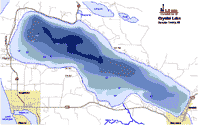 | Crystal Lake is one of the premier small boat sailing venues in the Midwest. |
On the August day in question, I was sailing an old Super Porpoise, a Sunfish clone a little bigger than its Sunfish ancestor. The boat sported a short mast and lateen sail along with a self-bailing cockpit. On this particular day the wind was light and the atmosphere was uncharacteristically muggy. After an hour or so, I found myself completely becalmed near the center of the lake. Knowing that calms were rare on this lake, I resigned myself to wait it out before wearing myself out paddling for my home beach several miles away. Count this decision as mistake #1. I should have read the ominous signs and paddled to the nearest shore. The calm persisted. I had a clear view toward the west side of the lake and to my horror I saw a classic line squall bearing down on me and my becalmed boat at an alarming rate of speed. The leading edge of the squall line was jagged, full of rain and possibly hail, and looked grey/white in color – like the underbelly of a Great White Shark (all negative connotations intended!) I had been in several squalls like this before, and while rather exciting, they didn’t strike me as all that dangerous. However, this squall was full of lightning with many full cloud to ground strikes occurring every few seconds. I have a healthy respect for lightning but as the squall approached, that respect starting changing to fear. I knew that life was about to get very interesting in the next few minutes. Thinking back to my Boy Scout days, I recalled that lightning is likely to strike the highest object on a surface, and at this exact moment, the highest object on my patch of Crystal Lake was the peak of the aluminum gaff on my boat! I considered lowering the sail and unstepping the mast but at the rate the squall was bearing down on me, I wasn’t sure I had enough time, and even if I did, I would still have a partially furled, wet sail and a lot of metal spars on the deck. Abandoning the first plan, I decided to intentionally capsize the boat with the sail still fully hoisted. By standing on the side of the deck and pulling on the mast, I got the boat on its side. I then continued to push the rig down until the hull “turned turtle” and was completely upside down. The lake was over 100 feet deep at this spot, so there was no danger of getting the rig stuck in the bottom and with the boat turtled and the dagger board and rudder retracted, the hull was almost awash or at best a few inches above the surface. I was wearing a good PFD, and swam to the windward side of the hull looping the mainsheet around my waist. I hunkered down low in the water near the hull and braced myself for the onslaught. 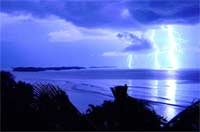 | Given the short interval between each flash and report, I knew that the lightning was virtually on top of me. |
The squall hit only seconds after I got in the water, and it was quite a show. The sky turned black as night, rain and hail pelted the surface of the lake and I estimated the wind at somewhere between 50 and 60 mph. The lake surface went from flat to whitecaps in a matter of seconds. The black sky was punctuated with flashes of lightning, and given the short interval between each flash and report, I knew that the lightning was virtually on top of me. The squall enveloped me for about 5 minutes, but within minutes, the leading edge of the squall had moved off to the east, the sun came out again, a gentle wind returned and about the only evidence of the storm was noticeable temperature drop of several degrees. I righted the boat, scrambled back in sheeted in to the new wind and returned home without incident. In retrospect, I have to wonder if I did the right thing. Having a good PFD in the boat and wearing it (which I always do when sailing single handed) was the first good decision. I also knew that I had to reduce sail one way or the other as an exposed sail in a 60 mph wind would have been violently dangerous. But the important question was the lightning factor, specifically was I safer mostly submerged in the lake or by being in the lake was I more prone to the ill effects of a surface strike? I would be interested in reader comments, so feel free to chime in below.
18 Jan 24: The Mevagissey Race Trophy From Doug: Pat, now sadly departed this mortal coil, was one of the original owners of Kelly and Halls boatyard at in the UK. He was a highly skilled craftsman and an excellent competitive sailor. He designed and built his beautiful small keelboat named "Gossamer". The boat was a pure sailing boat, fully decked apart from the cockpit and performed really well.
Every year there was a race from the River Yealm in Devon to Mevagissey in Cornwall, Pat Hall was a regular competitor in the race. One year, he set off as usual in "Gossamer" but there was hardly a breath of wind, so he used his skill and experience to make his way slowly a few miles out into the English Channel, searching for a steady breeze to take him to Mevagissey and the race finish line. He succeeded in finding a breeze and eventually crossed the finish line. He moored up outside of the yacht club and went inside, asking if anyone else had arrived before him. He was told "The race was cancelled because there was no wind!" His response was "No wind, how do you think I got here, I have a sailing boat with no engine and just a small single paddle, so I want the winners trophy." They refused to give him the trophy telling him again that the race was cancelled. His response "If I can sail here, so can anyone else, nobody told me the race was cancelled, I'm taking the trophy." They refused to give it to him, so he took the trophy from the cabinet, marched back to his boat, cast off and sailed back to the Yealm. Upon his arrival at the Yealm Yacht Club, the Commodore told him they'd received a telephone call from the Mevagissey Yacht Club asking for the trophy back. He said "If they want it back, tell them to come and get it." They never did and he never returned the trophy. Perhaps I should have mentioned, Pat was quite a character, a big very strong man, 48 inch chest, 32 inch waist, a hair trigger temper, fiercely competitive and didn't suffer fools at all.
18 Jan 24: "We're There" by Richard and Steve
From Richard:
My late brother, Steve and I both shared our life long' love of sailing, especially when it came to spending a day on the water in my 24’00” Raven Class Sailboat,“Proud Mary". Sailing was in our blood. The Raven was not only a comfortable sailboat, but also extremely fast. After Steve unexpectedly passed away in 2021, we installed a wooden bench overlooking the inner Winthrop Harbor here where we spent many summers sailing. A few people have asked me about origin of the phrase, "We're there" on my brother Steve's memorial bench? When Steve would be taking a small group out on the Proud Mary sailing for the first time, they'd be heading out to the harbor and someone would ask, "Steve, where are we going?” Are we going to sail up into Boston Harbor? Or maybe out to the harbor islands? Steve would respond, "where are we going?" "where are we going?""We're there!" "We're sailing!" With Steve, the destination was sailing. We’re sailing! "We're there!”
What a beautiful boat! We need to learn more about that. Also Richard has great stories about dodging airliners near Boston's Logan airport. I always wondered who that was out having fun in a sailboat, while I was having fun bringing my jet in for a landing on runway 4R.
Thank you Richard and Steve and PROUD MARY for sharing your story. We look forward to listening to more.
20 Jan 24: The British Seagull: Yealm River Episode by Bilge Rat From Bilge Rat: "Pat was in a small clinker dinghy in the middle of the River Yealm attempting to start the Seagull outboard motor mounted on the transom, it was the old model that ran on 3/4 pint of oil to gallon of petrol, (the reason they last forever) the spark plug had oiled up, so there was no chance of it starting unless the spark plug was removed, cleaned and replaced. Pat Hall didn't have much patience with mechanical devices, especially motors that don't start right away. He became frustrated very quickly, ripped the motor from the transom, threw it into the bilge of the dinghy and gave it a severe kick for good measure. Unfortunately, he was wearing Wellington boots, which offered little protection, resulting in him a breaking his toe. The resulting pain angered him further, so he grabbed the outboard motor and heaved it over the side into 80 feet of salt water, this was the moment he realised there were no oars in the dinghy, meaning he faced a cold swim, or have to hail the ferryman, both options embarrassing for him. Additional to that, the outboard motor now residing in Davy Jones Locker, belonged to someone else." ...to be continued... ...continued... The Seagull was recovered by a diver a few days later, cleaned, service, tuned and put back into service. Pat got a ribbing or two from the Ferry Captain at the local pub, friendly and measured though, as Pat was a mountain of a man. Signed, Doug "Bilge Rat" Editor's Note: Take the same story, swap out Pat's name with Cap' Jack. Replace kick with salty pirate language. And instead of Davy Jones locker, trade motor to friend for a Christmas tree. 22 Jan 24:
Pat was on a small motor launch in the middle of the narrow end of the river, about 40 feet out from the bottom of the boatyard slipway. He was attempting to start a small Stuart Turner 2 stroke inboard motor.
Many will know that the old Stuart Turner 2 stroke hand cranked motors were reliable, economical and long lasting, but they can be very troublesome starters at times. After a few minutes of relentless effort and much cursing, his short fuse sparked his powder, the cast iron starting handle, which weighed about 10 lbs was angrily removed from the flywheel shaft and thrown with all his strength, the direction it was heading in wasn't even considered, the all consuming thing was just to throw the offending handle as far as humanly possible, a punishment for it's part in refusing to bring the engine to life. The starting handle whirled through the air in a high arc, across the 40ft of water, past the whole 80 ft of the slipway, eventually coming to a stop when it struck the transom of a deep keel boat inside the boat shed at the top of the slipway. The slipway has a slope of about 20° so you can guess how high above the water the starting handle was at that point. An Olympian performance by any measure.
Many thanks to Cap' Bilge Rat for sharing Pat's story.
29 Jan 24: A gentle reader had questions for our friend Murray about stern shapes...boat sterns... Very good questions. We'll listen in on the conversation... "Hi Murray, I’m completely confused. Some of these boats (and ships) look they have two bows, but others seem to have two sterns. So I’ve looked up both “bow” and “stern” in Wikipedia, and my head is spinning with the dozen different kinds of each. The “bow” article explains that the shape has a purpose, namely, to enable the vessel to glide forward efficiently (hydrodynamically, I should say) in the water. The stern doesn’t seem to have a particular purpose that dictates its shape. It has to be designed in conjunction with the rudder, but, in general, it just has to end the boat. In that case, why not make it pointed like a bow? Or a flat transom, like a “regular” stern? Or shaped like a C? It can be anything. In fact, it’s amazing that its shape is so (relatively) consistent given that it could be anything. So I must be wrong. Does the shape of the stern figure into backing or docking? Maneuverability to avoid obstacles or enemy fire? The ship that amazes me in your pictures is the big old sailing ship with two flat ends, two sterns. How did such a vessel make any headway? Why would anyone build such a thing? But underneath the waterline (and just above it), the ship seems to have a pointed bow peeking out, so maybe it’s only the upper part of the ship that is a “rectangular building” sitting on a canoe shape or a rowboat shape. Do you have a favorite shape for sailing? (Is this a silly question? Are sailboats all the same shape?) Very interesting stuff! Teach me about sterns, please." Murray responds... I will make my comments, which may or may not be valid. A sharp bow will ride waves better than a flat splashy bow. A transom stern is easier to build than a sharp pointy stern and also allows more stowage room and shorter length of vessel. So a transom stern is more common. A shorter boat costs less to dock. When the builders went to the extreme in the 60's, I started calling them "Sawn-off 50 footers". I thought them ugly with reverse sloping sterns. By "shaped like a C" do you mean a rounded counter stern? It must be easier to maneuver and dock without long overhangs fore and aft. The whale sailing ship picture shows the blunt stern but the bow is obstructed from view. The bow though bluff, would be sharper than the stern. I am amazed that those old ships could sail to windward by tacking. But Admiral Lord Nelson apparently said HMS Victory was a good sailer. She is still preserved and looks an awful blunt ended floating fortress. She was sailed there and back to Cape Trafalgar so must have been capable.
How she sailed, I do not know but being long (186 ft), deep in the water (29 ft) and relatively narrow (52ft) must be the explanation. and the rudder is so small, I expect the sails were used to alter course. Her transom is clear of the water. Modern sailboats usually have width 1/3 of length. As you say, it is the under water shape that matters. Waterline length is a determining factor for speed. Too much stuff above the waterline{ top-hamper} makes for difficulty going against the wind (windage). Victory was a battleship built to carry heavy canons to defeat invading fleets.
As for favourite shape, Usually a pretty boat sails better than an ugly one. I feel I can tell if a boat will sail well just by looking at it. And considering the heritage. However, that may be just my vanity.
One of my most favorites
I knew these would sail before I set foot in them
This one fooled me. Turned out to be... (edited: porcine in nature) Shapes and fashions are constantly evolving. Now we are foiling and multihulls and reaching amazing speeds. Many years ago there was a notion that yachts should follow the form of a fish. They called it" Cod's head and Mackerell tail" I built a model C and M which sailed badly. Like others, I found that a sharp bow and an ample beam further aft sailed much better. Another fad was "Plank on edge", being narrow and deep. GENESTA Plank on edge 1887 Yacht MERGANSER converted to houseboat As for sterns, I like them clear of the waterline as they have less turbulence and drag. They can be vertical or slopeing transom stern, canoe stern, counter stern, elliptical stern. I think I know a pretty stern when I see one. ( and an ugly one, too)
Best regards, Murray"
Doug checks into the conversation with information on the Drascombe Lugger stern design: "Hi Murray The stern on the Drascombe Lugger was designed to be shallow and have minimal drag, but wide enough to provide good hull stability, the over riding criteria was the ability to beach stern on to a beach, allowing the crew to step ashore dry shod. The crew being defined as the designers wife. All the best Doug"
Murray now has questions about the Drascombe Lugger. "Hi Doug, Having never sailed on a Drascombe, I am curious to know how the rudder, motor well and counter stern all fit together and work. Keeping feet dry is a great accomplishment. Tall wellies also help. How much was the design influenced by the Yorkshire Coble?" The Uffa Fox Airborne Lifeboats were canoe stern with rudder in a trunk. In 1960's there were a few ABLs on the Tamar. Lovely boats! Thanks and best wishes, Murray" I wander by the conversation. "Hi Murray,
I'd like to see one of those ABLs, Uffa was copied by Higgins. Audrey won't let me rig ONKAHYE for a drop."
Murray responds to encourage Skipper to airdrop her Lugger
Audrey and Kent,
"Flying 15, Flying 25, Why not a Flying Drascombe?
Thanks for the rudder description, all makes sense.
The last ABL I saw was at Norfolk Small Boat Museum, when I toured as many Maritime Museums as I found in England in 2013. So glad they have one at Yelverton.
Uffa Fox designed a small cabin sailboat called Atalanta which in some ways resembled the ABL. It had 2 parallel centerboards.
Best wishes, Murray"
02 Feb 24: Cap'n P was an extremely good and fiercely competitive sailor.
He was racing in his beautiful keelboat "Solana" an Angus Primrose design, neck and neck with his closest rival as they entered the River Yealm. After tacking around the sandbar, there's usually another couple of tacks to keep well clear the jagged rocks that line the mouth of the river before a clear run to the finish line. His closest rival just had the edge and was nosing in front, but when it came to what should have been the penultimate tack, Cap'n P saw his opportunity to snatch the lead, his rival went about and lost headway a little, but Cap'n P left his manoeuvre to the very last second, getting dangerously close to the jagged rocks and in the process striking them with "Solanos" transom, taking out a sizeable chunk of Honduras Mahogany. The late manoeuvre enabled him to avoid another tack, run down to the finish line and win the race. His rival, who'd gone about further away from the rocks was forced to make one more quick tack before running down to the finish line.
After the race Cap'n P was asked what had caused him to strike the rocks with the transom? His reply, "It was the only way I could take the lead, I can easily repair the boat and everything will be good again, but if I'd lost the race, there's nothing I could do to change that, it would be a race I'd lost forever." Sailors don't come more competitive than that! Doug (Cap' Bilge Rat) 14 Feb 24: Cap'n Pat lived in a house attached to the boatyard, his bedroom overlooked the road that ran past the rear of both building. A neighbour who lived in the house on the opposite side of the road to his bedroom, would often return in his car late at night after a drink at the local pub. The entrance to his garage and parking area (originally a stable in the old days) was through a narrow gap in an old stone wall. Invariably, it involved a lot of manoeuvring to line the car up well enough to pass through the narrow gap, Cap'n Pat was a light sleeper who usually went to bed early, so one evening, he decided enough was enough, he was not in the mood to have his sleep disturbed any more. He got out of his comfortable warm bed, put a dressing gown over his pyjamas and slippers on his feet, stormed down the stairs and out of his house straight to the boatyard, where he picked up a sledge hammer. Suitably equipped, he matched around the rear of the boatyard towards his neighbours house, where his neighbour was still attempting to line his car up with the gap in the wall. Cap'n P dressed in his nightwear and slippers, immediately started to demolish one side of the wall, making the gap a good few feet wider, he then turned to his neighbour, who was sitting in his car looking on in amazement, and said "Perhaps you can get your ********* car through the ********** gap now!" He then returned to his bed and a peaceful night's sleep. A few days later, he was told by an official to rebuild the wall, which he reluctantly had to do, but he never had a disturbed nights sleep afterwards.
(********* = Sailors cussing words, not suitable reading.  )
Cap' Bilge Rat. --------------------------------------------------------------
Another story Cap'n Pat told me himself. He signed on to join the Royal Navy as an Officer in WW2, when it was announced that the war had ended, he packed his kit bag, walked down the gangplank and headed for home. I queried that, because I thought enlisted men all had to wait to be discharged. He said "I only signed on for the duration of the war and the war had ended, so I went home."
Doug ...to be continued... |





.jpg)
.jpg)
.jpg)

.jpg)
.jpg)


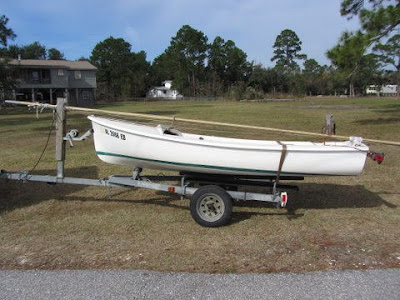


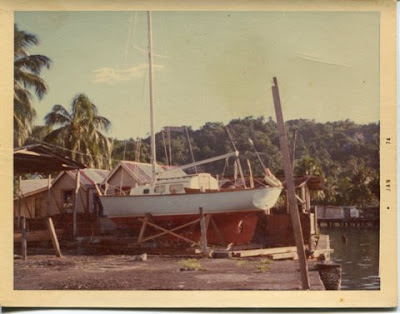
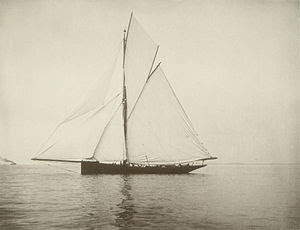


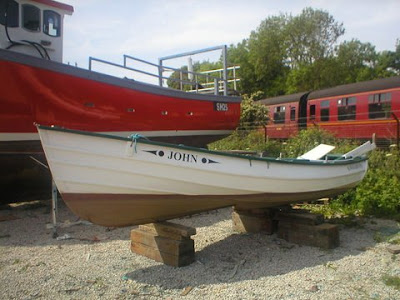
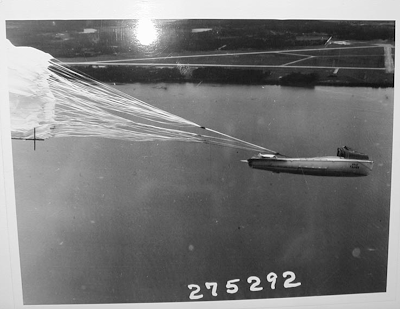
 )
)
No comments:
Post a Comment